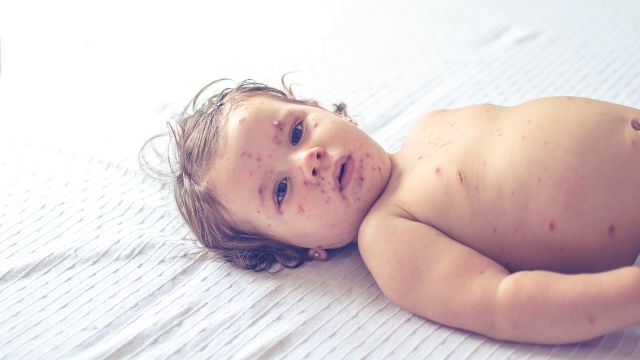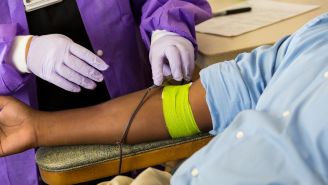Updated on April 7, 2025.
For parents who are unsure or hesitant to vaccinate their children, here’s a wakeup call: There are at least 607 measles cases across the United States—the worst outbreak since 2019. The U.S. recently recorded the first fatal measles case in 10 years. On February 26, Texas health officials announced the death of an unvaccinated school-aged child from the infection. Days later, on March 6, the New Mexico Department of Health (NMDOH) confirmed that an unvaccinated adult who died tested positive for measles.
The latest measles activity in the U.S.
As of April 3, 2025, a total of 607 confirmed measles cases were reported in 22 states: Alaska, California, Colorado, Florida, Georgia, Kansas, Kentucky, Maryland, Michigan, Minnesota, New Jersey, New Mexico, New York City, New York State, Ohio, Oklahoma, Pennsylvania, Rhode Island, Tennessee, Texas, Vermont, and Washington., according to the U.S. Centers for Disease Control and Prevention (CDC).
Overall, 32 percent of U.S. measles cases involve children younger than 5, 40 percent are kids and teens ages 5 to 19, and at least 26 percent are adults ages 20 or older. As many as 97 percent of those infected are unvaccinated, or they have not received the two-dose MMR vaccine, which offers safe and effective protection against measles, mumps, and rubella. And at least 12 percent of those with confirmed measles cases needed to be hospitalized as a result of their infection.
In October 2024, researchers at the Centers for Disease Control and Prevention (CDC) reported that MMR vaccinations among kindergarteners in the U.S. dropped to 92.7 percent in 2023-2024—below the 95 percent threshold required to stop the spread of the virus.
Experts caution recurring outbreaks threaten the United States’ measles elimination status.
When was measles eliminated—and how?
In the U.S., thanks to widespread, routine childhood vaccination with the MMR (measles, mumps, rubella) vaccine since 1971, measles was declared eliminated in 2000, according to the CDC.
But for many reasons, including lingering misconceptions about vaccines, fears about a link between the MMR shot and autism (which stem from a falsified report that was retracted and discredited decades ago, an increasing number of parents have not vaccinated their children.
Some don’t immunize their kids because they think the diseases being prevented are not common enough to worry about—or they’re concerned about vaccine safety, says Anthony Komaroff, MD, Distinguished Simcox-Clifford-Higby Professor of Medicine at Harvard Medical School and Senior Physician at Brigham and Women's Hospital in Boston.
As a result, measles outbreaks are occurring in areas where there are groups of unvaccinated people.
In 2019, confirmed cases in the United States reached the highest level in 28 years. Overall, in the U.S. that year there were 1,282 confirmed cases of measles in 31 states. It is the greatest number of cases reported in the U.S. since 1992 when 963 cases were reported for the entire year. It's also the highest number of cases since measles was declared eliminated. At that time, measles cases had already been trending upward.
The COVID pandemic further disrupted routine vaccinations in the United States. In 2020, the percentage of children around the world who were vaccinated against measles dropped to 84 percent. Another 2020 model-based study found that a continuing reduction of measles vaccinations among 1-year old children in the United States could push vaccination rates below 80 percent.
Since the pandemic ended, there is evidence that routine childhood vaccination coverage started to rebound. But this hasn’t been happening evenly across the country, according to the CDC. Some areas and certain groups of people have less protection than others. The rebound may also not be enough to achieve “catch up” coverage—or making sure all those who have missed vaccine doses become immunized.
What happens if people skip routine vaccines
When enough people in a population are vaccinated against a disease to prevent it from spreading, it is called herd immunity. But herd immunity also depends on how contagious a disease is, or how easily it spreads. Since measles spreads from person to person very easily, it’s estimated that 95 percent of a population needs to be vaccinated to stop it from spreading.
Kids who miss out on routine immunization may also be at risk other vaccine-preventable diseases, including diphtheria, tetanus, pertussis, and varicella (chicken pox).
“This means every year children get severe illnesses and possibly even die from diseases that could have been prevented by a vaccine,” Dr. Komaroff cautions, noting that “all vaccines are carefully studied before they are licensed for routine use.”
But is the MMR vaccine safe?
The MMR vaccine is given in two shots, the first at age 12 to 15 months, the second between the ages of 4 and 6 -years old. Study after study has shown that this vaccine is very safe and effective—and it and does not cause autism in children who receive it.
In 2011, an Institute of Medicine (IOM) report, which examined eight vaccines given to both kids and adults, found that they are very safe. In 2013, a CDC study examined the immune response to the vaccine in children during the first two years of life. They found no differences between kids with autism and those who did not have this condition.
A March 2019 study published in the Annals of Internal Medicine, analyzed the safety of the MMR vaccine even more rigorously. Researchers in Denmark used larger populations of children (hence more statistical power) to investigate concerns about a link between the vaccine and autism. They also included a larger number of children considered at high-risk for autism to address the specific claim that the MMR vaccines may be more dangerous for these kids, in particular.
The scientists evaluated whether the MMR vaccine increased the risk of autism in 657,461 children born in Denmark between 1999 and 2010. They tracked the kids until August 2013, documenting diagnoses of autism spectrum disorders and risk factors for these conditions, including parents’ ages, siblings with autism, method of delivery, smoking during pregnancy, preterm birth, and low birth weight.
The study found no evidence of a link between the MMR vaccine and autism or an increased risk for these disorders—even among high-risk kids.
A more recent 2020 review of existing studies publish in Frontiers in Microbiology also found no causal link between the MMR vaccine and autism—or autoimmune disease or a weakened immune system for that matter. The researchers warned, however, that the misinformation surrounding vaccine safety does pose a threat to children’s lives around the world. They emphasized that life-saving vaccines are the reason why most people do not have first-hand experience of the devastating consequences of many vaccine-preventable diseases.
Yes, measles can be dangerous—even deadly
The most common side effects of the MMR include mild rash, fever, or temporary discomfort in the arm where the shot was given. By comparison, getting measles is far worse and more serious. Measles is a highly contagious respiratory illness that can cause severe complications. One in five cases requires hospitalization, and about three in every 1,000 cases is deadly.
Measles symptoms usually appear seven to 14 days after exposure. But they are considered contagious four days before they show signs of infection.
An infected person will develop a fever and fatigue. Before long, they will start to cough and get a runny nose. They may also have conjunctivitis, also known as pinkeye.
About two days after these symptoms appear, tiny white spots, called Koplik spots, may form inside their mouth. Three to five days after symptoms begin, patients will break out in the characteristic red measles rash. First, it will appear on their face before spreading to their chest, arms, legs, and feet. At this point, their fever may spike to more than 104 degrees Fahrenheit.
Those infected may continue to be contagious or spread the virus to others for four days after the rash appears.
Measles can also cause ear infections, diarrhea, and pneumonia. More rarely, it can lead to encephalitis (inflammation of the brain), which may be fatal. This risk for serious complications or death resulting from a measles infection is greater for infants than young children or adults.
There is no way to cure measles once someone is infected. “The only treatment centers around trying to lessen the severity of the disease and making your child as comfortable as possible,” says the Honor Society of Nursing (STTI). STTI recommends using a humidifier to ease sore throat and coughing and giving acetaminophen or ibuprofen for fever.







